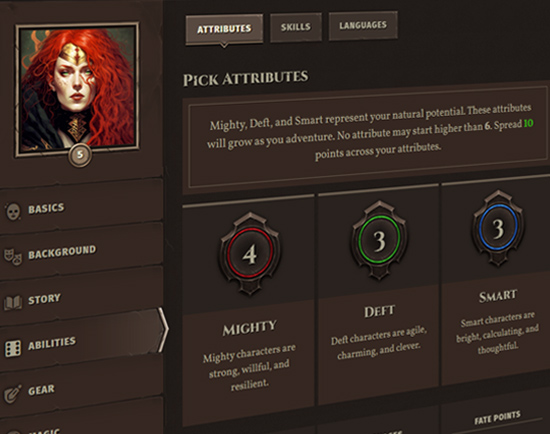Central to the way spells work in OSR+ are their underlying logic. While this logic is laid out in greater detail in the core rules, in this section we'll walk through an example spell to demonstrate how spell logic works.
Why Spell Logic?
The point of developing a spell "logic" for OSR+ is so that players and the GM can fill in the gaps where the rules are silent, this way you don't have to reference anything other than the spell text to reason your way to a valid interpretation of how the spell functions in any given context. It also allows you to scale up any spell's effects in every dimension, without having to reference written parameters in the spell text.
When a PC casts a spell you're unfamiliar with, don't be afraid to ask the player to read the spell aloud. Each spell is less than a paragraph long, so this should only take a few seconds.
Scaling Spells in OSR+
Since spells are infinitely scalable in every dimension, every spell becomes more powerful the more powerful the PC becomes.
Take the spell Vanish, for example:
Vanish
You fold a target object into the spiritual realm, disappearing it from the physical world. The object thus affected cannot be interacted with by any physical means. The size of the object is limited by the spell's area of effect.
You'll notice Vanish's text doesn't specify any parameters like duration, area of effect, targets, costs, and so forth, but from the base spell logic we know all spells have just three parameters:
duration
If a spell has a duration, it lasts a number of rounds equal to your level, plus 1 round per MP spent to cast the spell. For example, if you are 3rd level and spend 2 MP to cast a spell, it will last 5 rounds.
Targets
If the spell has targets, it can affect a number of targets in its area of effect equal to the MP spent to cast the spell.
Area of Effect
For 1 MP, the spell has a personal area of effect (unless it says otherwise). For 2 MP, the spell's area of effect is a melee space; for 3 MP, an encounter space. Each additional 3 MP adds another encounter space.
So we know from these assumptions that if you’re a 1st level spellcaster spending 1 MP:
- The spell can last up to 2 rounds (your level, plus the 1 MP you spent)
- You can make one object disappear (1 MP per target)
- The area in which you can make targets disappear is a personal space (1 MP = personal space).
Now if you had put more MP into the spell at the time of casting, every parameter of the spell scales up. Suppose the scene of the encounter is a large thieves guild warehouse. The size of an encounter space would be the whole warehouse. So if you spent 3 MP, your spell becomes more powerful:
- The spell can last up to 4 rounds (your level, plus the 3 MP you spent)
- You can make up to four objects of any size disappear, so long as they are smaller than the encounter space (1 MP per target, plus the spell's unique restrictions on the target's size)
- The area in which you can make targets disappear is the whole encounter space (3 MP = the encounter space).
By having this base spell logic underlying every spell, it becomes a matter of looking for exceptions to the baseline assumptions in that logic, when reading the spell's text. In the spell Vanish, the unique exception is that "the size of the object is limited to the area of effect," but we know the area of effect is a function of how much MP we put into the spell.
 Archetypes
Archetypes Armor
Armor Classes
Classes Conflicts
Conflicts Cultures
Cultures Ethos
Ethos Flaws
Flaws Glossary
Glossary Kits
Kits Maleficence
Maleficence Origins
Origins Shields
Shields Skills
Skills Spells
Spells Stances
Stances Status Effects
Status Effects Tactics
Tactics Talents
Talents Techniques
Techniques Treasure
Treasure Weapons
Weapons











 Hall of Heroes
Hall of Heroes Hall of Legends
Hall of Legends



 Dungeons & Flagons
Dungeons & Flagons